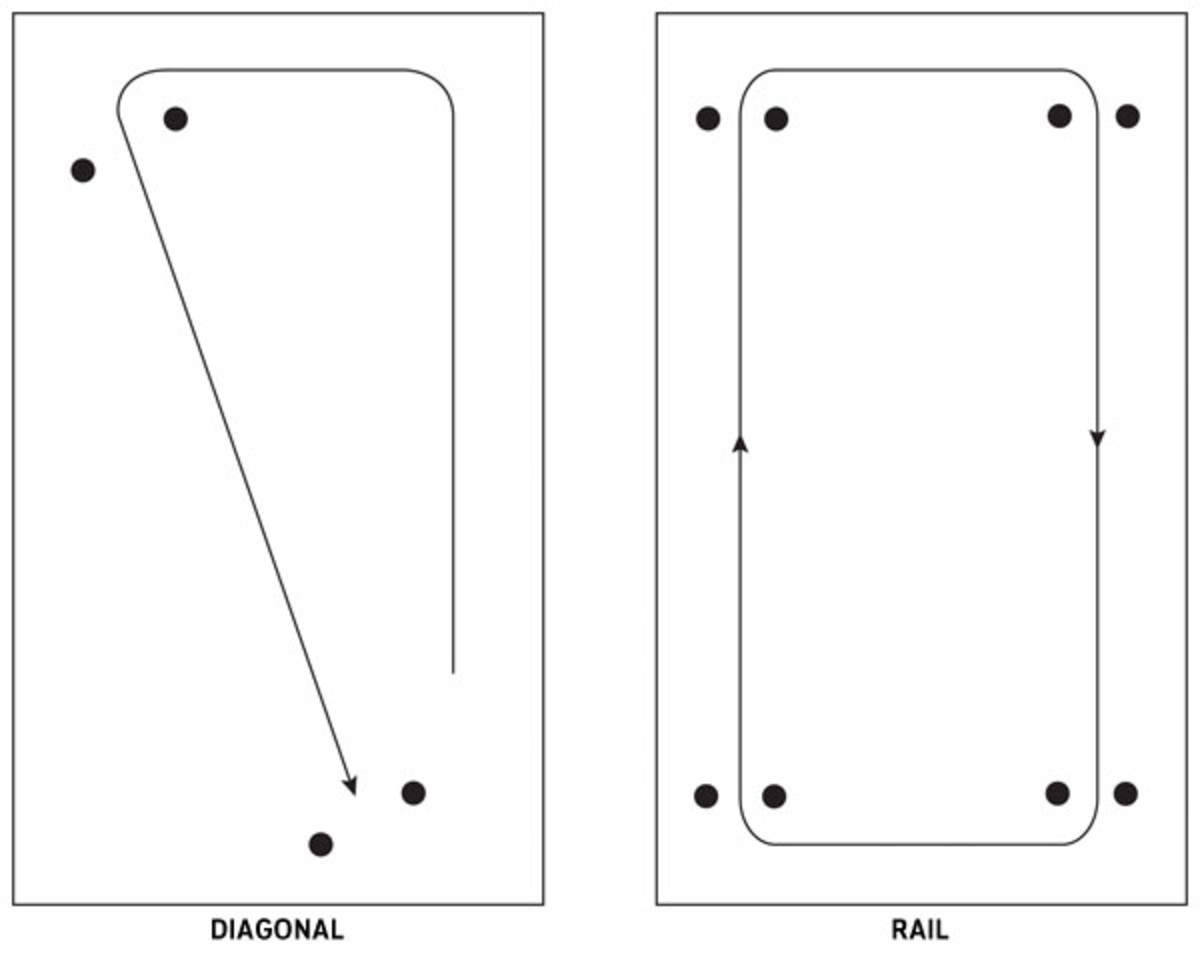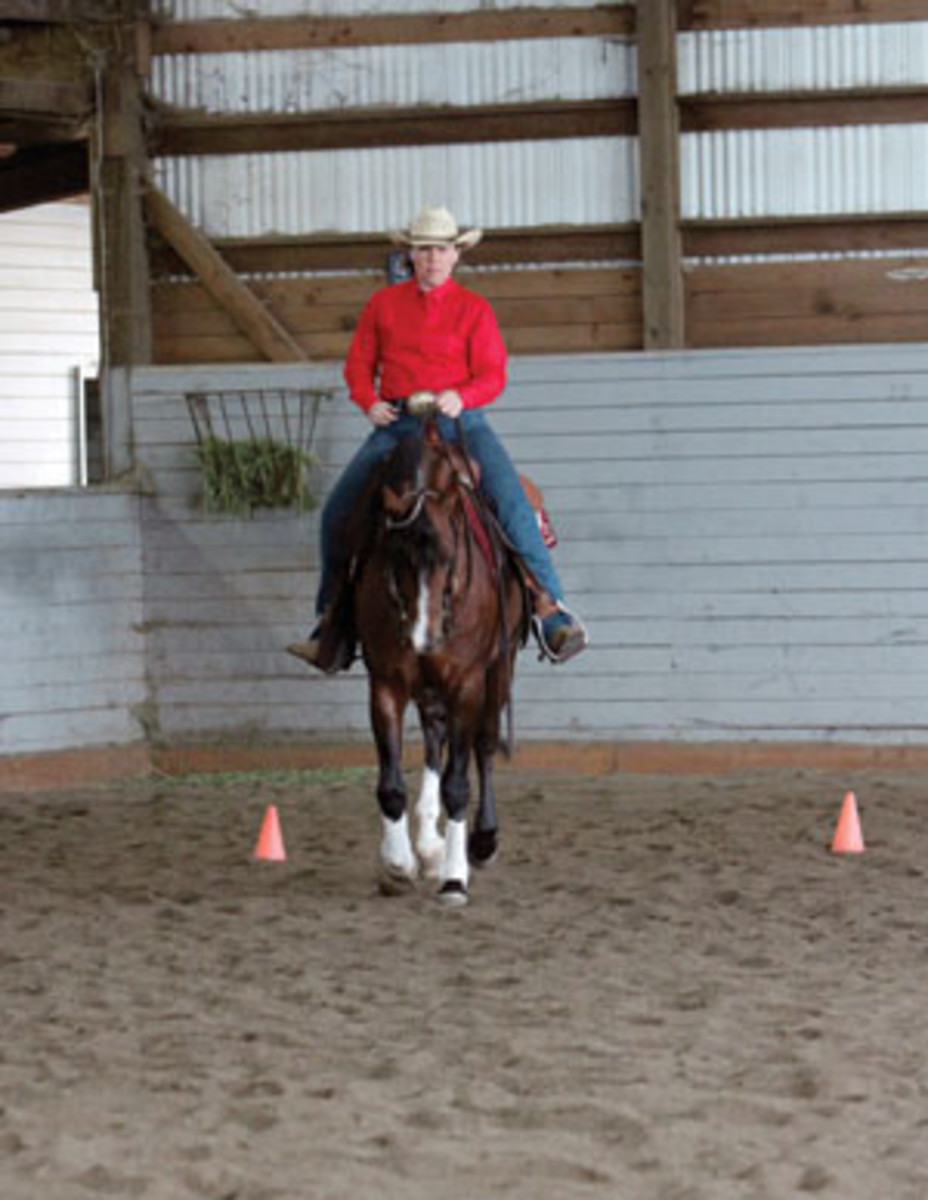Q I’d like to know a drill I can use to work on traveling straight lines. It seems like I always wind up at least a few feet off of where I want to be—often more than that. What techniques can I use to work on this maneuver, and of what do I need to be mindful?
Shelley Reese, Florida
A Straight lines can be tough to execute, but with some focus and the help of a few cones or other markers, you can work on staying on the right path. I use the exercise I’ll explain here for rundowns in reining, but it’s also useful for straight lines in other patterns, such as horsemanship. Further, the ability to travel a straight line is just plain good horsemanship and is something anyone can work on at home.

For this exercise, you’ll need four markers (I use orange cones). Set them up to work from one corner of the arena to the other, diagonally or a straight line parallel to the long walls of the arena, with each long-rail-side cone at least 20 feet off the arena wall. (See the diagrams on page 65 for a clear visual of the cones’ orientation.) I work diagonally across my indoor arena if I’m including lead changes, because that gives me a longer pass to make than going straight down the wall. This exercise is handy for the non-pro reiners to work on rundowns, and Western pleasure riders use it to keep the horse straight without depending on the rail. If you have eight markers, you can set them up similarly in the arena’s other corners, so you can work from each corner or rail.
I’m working at a lope in these photos, but you can execute this drill at any gate. It’s all about focusing on where you’re going rather than at what speed you’re traveling. I have many of my non-pro riders start with two hands to get the feel of the exercise and then graduate to using one hand. When you’re using one hand, be careful to keep your rein hand in line with the horse’s mane, and use your legs to guide the horse in a straight line. Many riders like to oversteer with their hand, which lets the horse drop his shoulders and makes him harder to steer and guide straight. You just have to hang in there and keep your hand straight and make the horse move off the leg pressure to hit the straight line.

Begin by loping around the perimeter of your arena. Ensure that your horse is listening to your cues, and as you round a corner where the cones are set up, turn the tight corner to work on your straight-line pass across the diagonal or the down-the-rail side of the arena.
One of the keys to straightness in this pass is keeping your eyes up and looking forward. Why would you look at your horse’s neck? He’s not going anywhere, and you’d be the first to know if he did disappear, even if you weren’t looking down at his neck. Much like driving a car or riding a bicycle, your horse will go where you look. To help keep your eyes up and forward, find a spot ahead of you on which to focus; don’t take your eyes off it. This also will help keep your body centered in the saddle, which means you won’t lean one way or the other and cause your horse to deviate from the straight path.
If you’re concerned about your horse’s position, use your body to feel where and when you need to apply more leg or rein pressure to steer him. When you start your turn, you need to make the horse square the corner, like the letter “L.” Use your outside leg to move his shoulder and ribcage over. As your horse gets lighter to leg pressure, he may over turn the corner, so you’ll need to adjust your outside leg pressure and have your inside leg ready to help drive him out of the corner to keep your straight line. Remember to keep your rein hand straight with the horse’s mane.

When you near your destination at the next pair of cones, don’t stop riding. Go all the way to your destination, through the cones, then turn the corner to go back to riding on the rail. If you lose focus, you’ll find yourself off-center between the markers—or even going on the wrong side of one of the markers. The cones act as visual aids to show that you’re not traveling on a straight path, in case you don’t yet have the feel in your body to know when you’re straight and when you’re not.
By staying focused through the entire pass, you train your body to ride that way all the time, so straight lines become less of a conscious effort and more of a natural way of riding for you and of traveling for your horse.
LaRae Powell specializes in training Arabians and Half-Arabians from her Silver Aspen Ranch in Auburn, Washington. Her open, amateur, and youth program has produced more than 250 national and reserve champions, many of those in reining competition.






